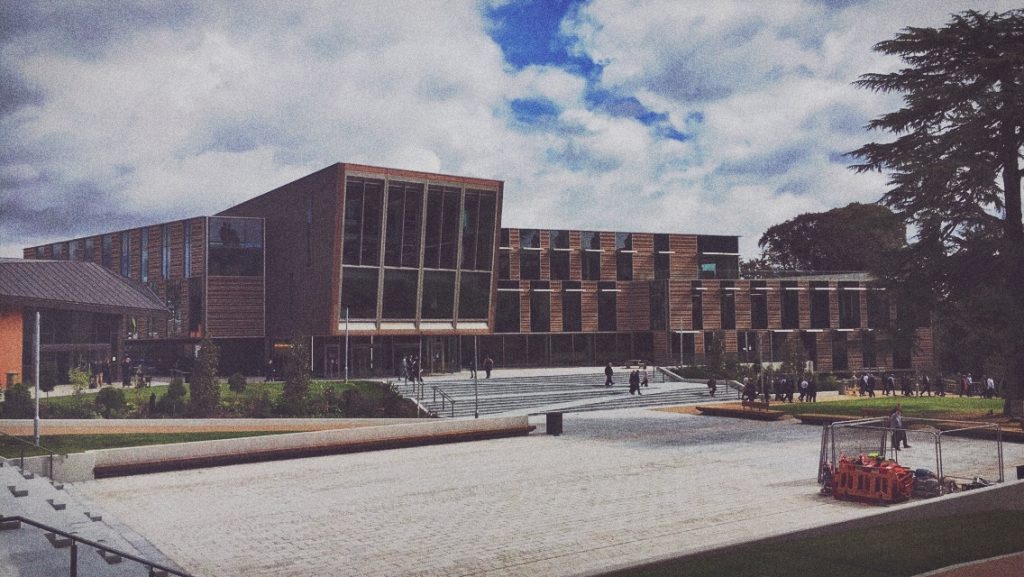
On Wednesday 18 October, the Emily Wilding Davison was officially opened by Her Royal Highness The Princess Royal, Chancellor of the University of London, Princess Anne. The building was closed to students between 9am and 4:30pm on that day to allow for the Princess’ tour and speech to be given.
The building was worked on for nearly two years, with almost 3000 people working on the construction of the building to get it to what it is today. The library contains more than 400,000 books and over 1000 study spaces for student use. It offers other services, such as the Union Shop, the Santander Bank, the Student Services Centre, the Careers & Employability Centre and the Exhibition Space for interests in art and culture.
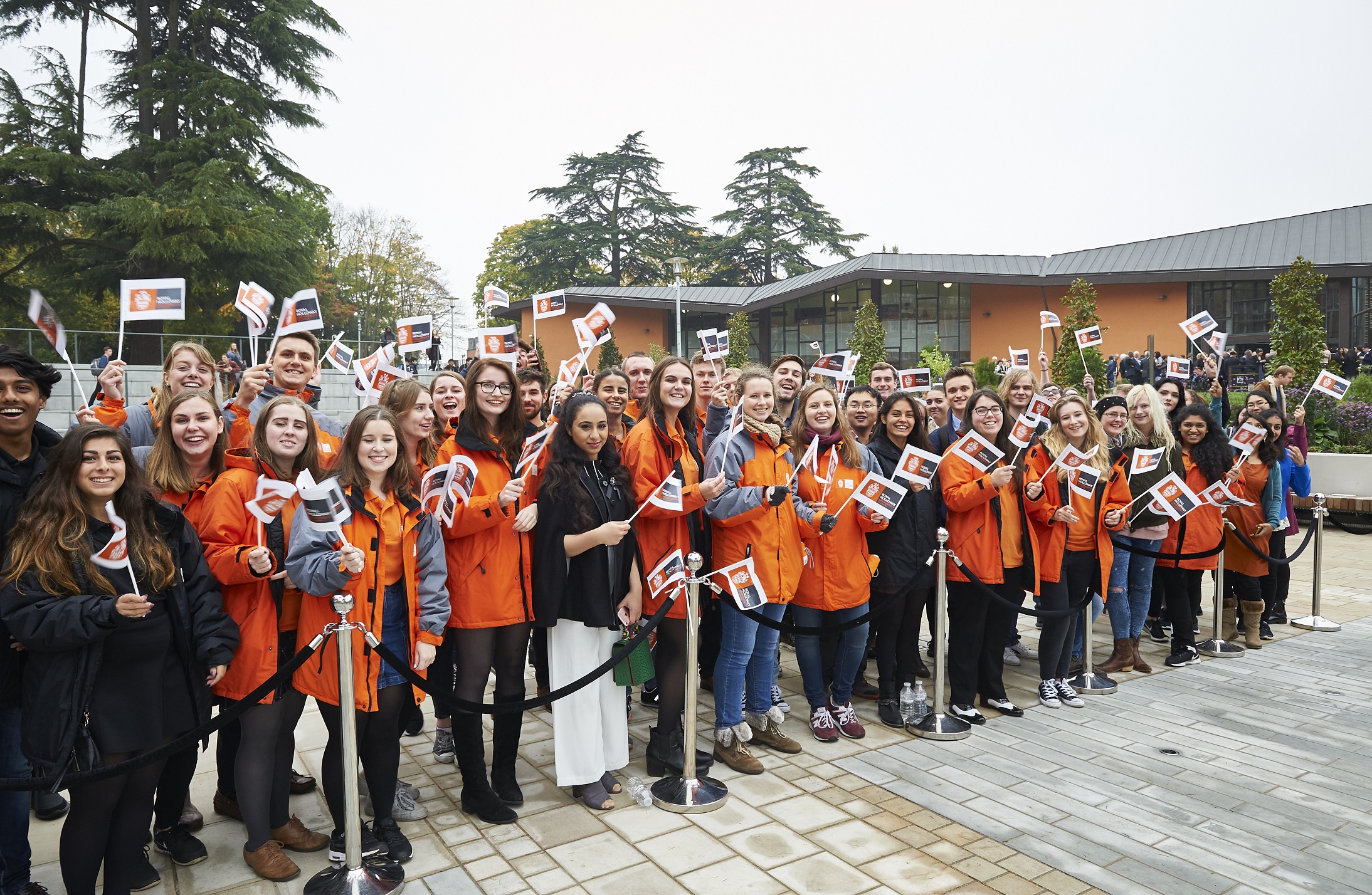
The opening was a remarkable event, with many students heading to Founder’s Square to see the Princess arrive and tour the Davison library. She was greeted by Principal Paul Layzell and other esteemed members of the College. As she toured the library, accompanied only by a few members of the College, guests in attendance stood in the Windsor Building foyer, where they were offered canapés, drinks and music provided by two music students, Flynn Sturgeon and James Ellis. There was also a performance from RHUL’s choral scholars, directed by Rupert Gough, Director of Choral Music.
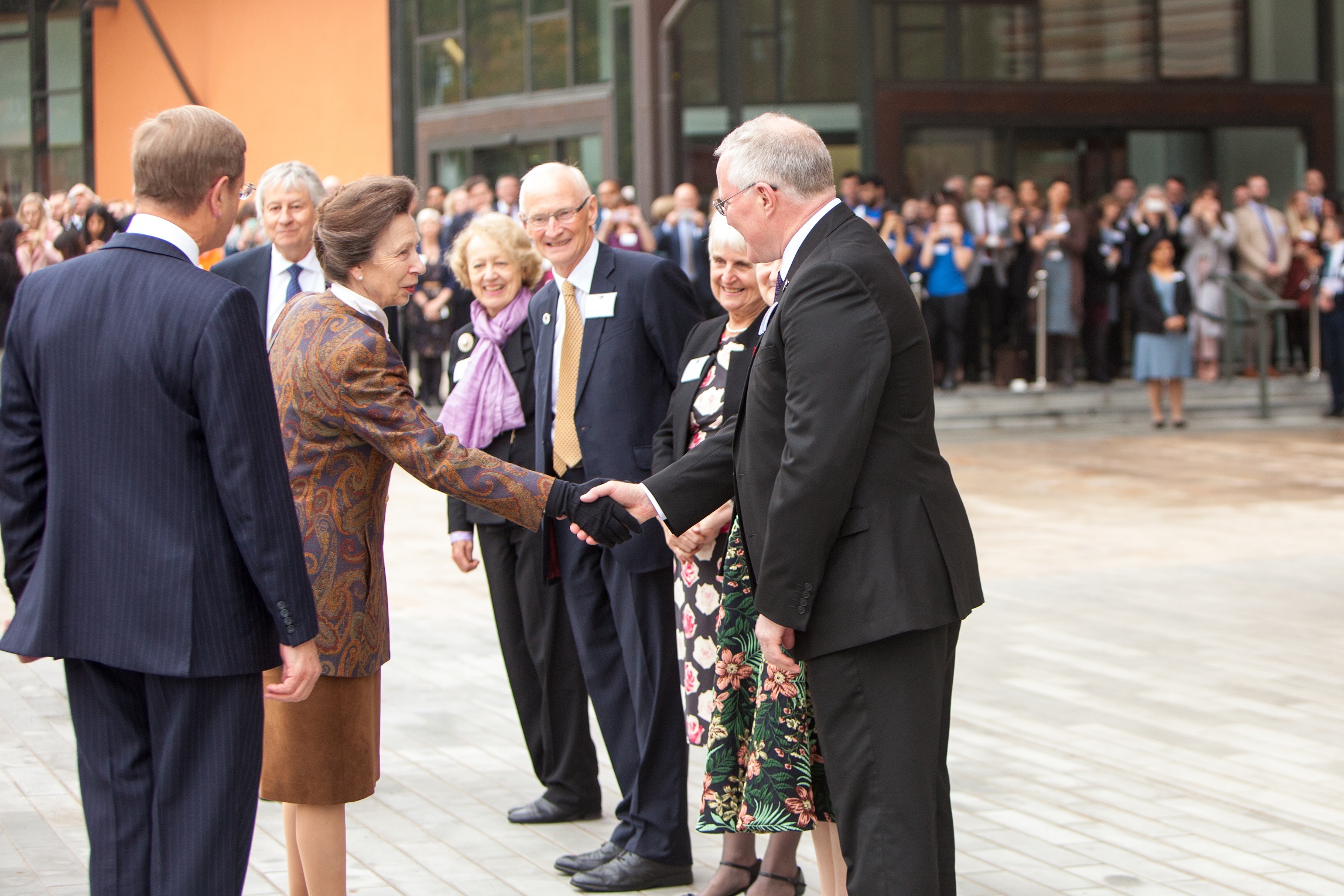
Following Princess Anne’s tour of the impressive library, a formal speech and plaque ceremony was held in the foyer of the building. Principal Layzell spoke first, highlighting the legacy of our campus and Davison’s connection to it. In particular, he mentioned the founders of Royal Holloway and how he believed their original vision for the university has been fulfilled. Elizabeth Jesser Reid, Thomas Holloway are all “people with purpose”, according to Principal Layzell. He stated that the naming of the Davison library after a woman with such an important role in the Suffragette Movement sent a message to our students about ambition and making a difference.
Princess Anne’s speech allowed everyone to celebrate the development of our campus. She spoke about the stunning library and how the building will be used and appreciated by all the students now – despite a previous assumption that “libraries were going out of style”. She then unveiled the plaque and declared the building officially opened to all students of Royal Holloway.
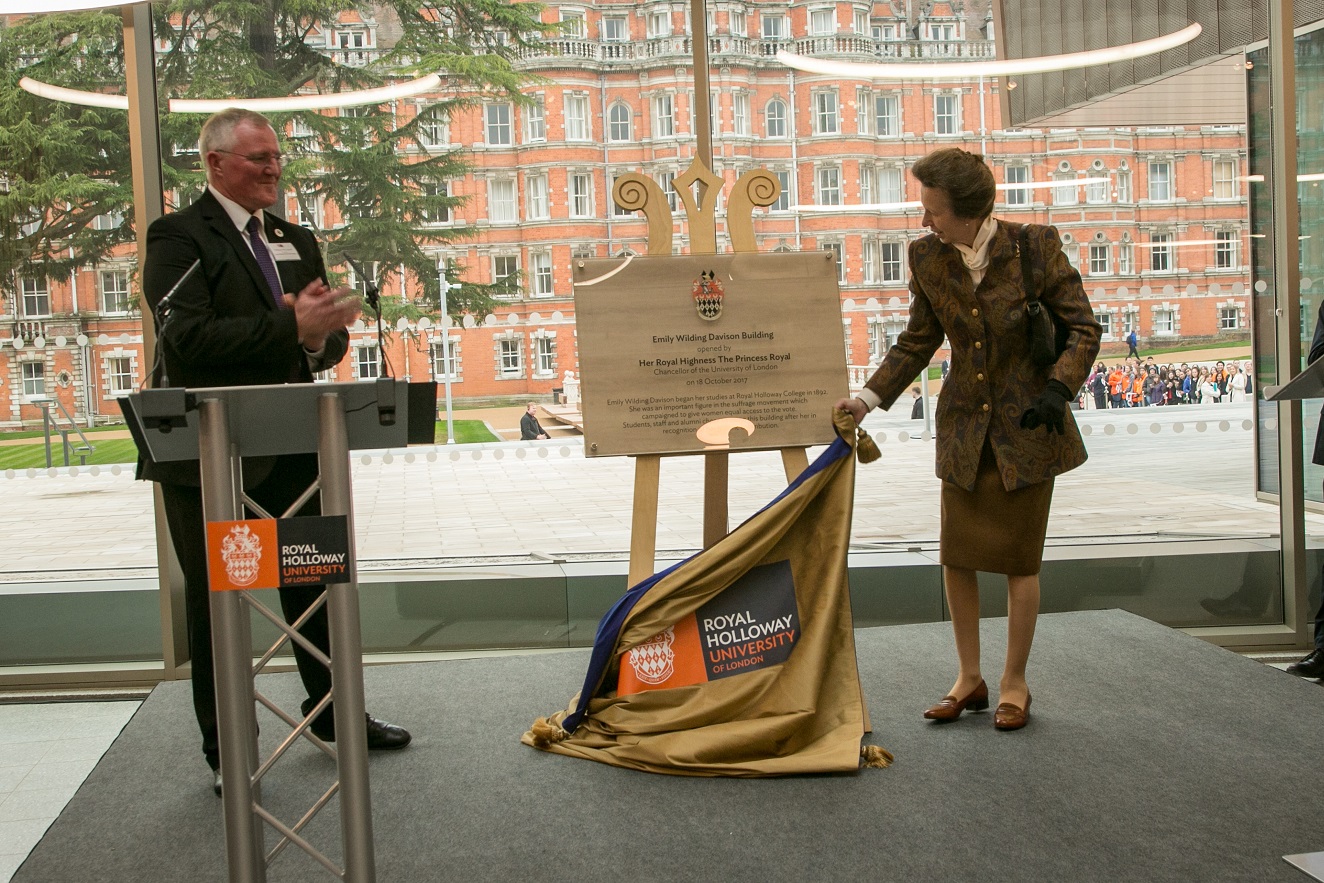
After unveiling the plaque, Princess Anne then presented Royal Holloway’s Community Action Volunteering Team with The Queen’s Award for Voluntary Service. The Community Action Programme at RHUL has amassed 10,416 hours of volunteering work in the last year alone. They have partnered with over 200 “community partner organisation within Surrey”.
Principal Layzell released a statement regarding the honour: “Congratulations to all our volunteers and the team that supports them. Volunteering is an important part of the Royal Holloway student experience. Through it, our students gain transferable skills including leadership and resilience, and the lasting relationships created between students and the people they help mean that together we have a positive impact, locally and across Surrey.
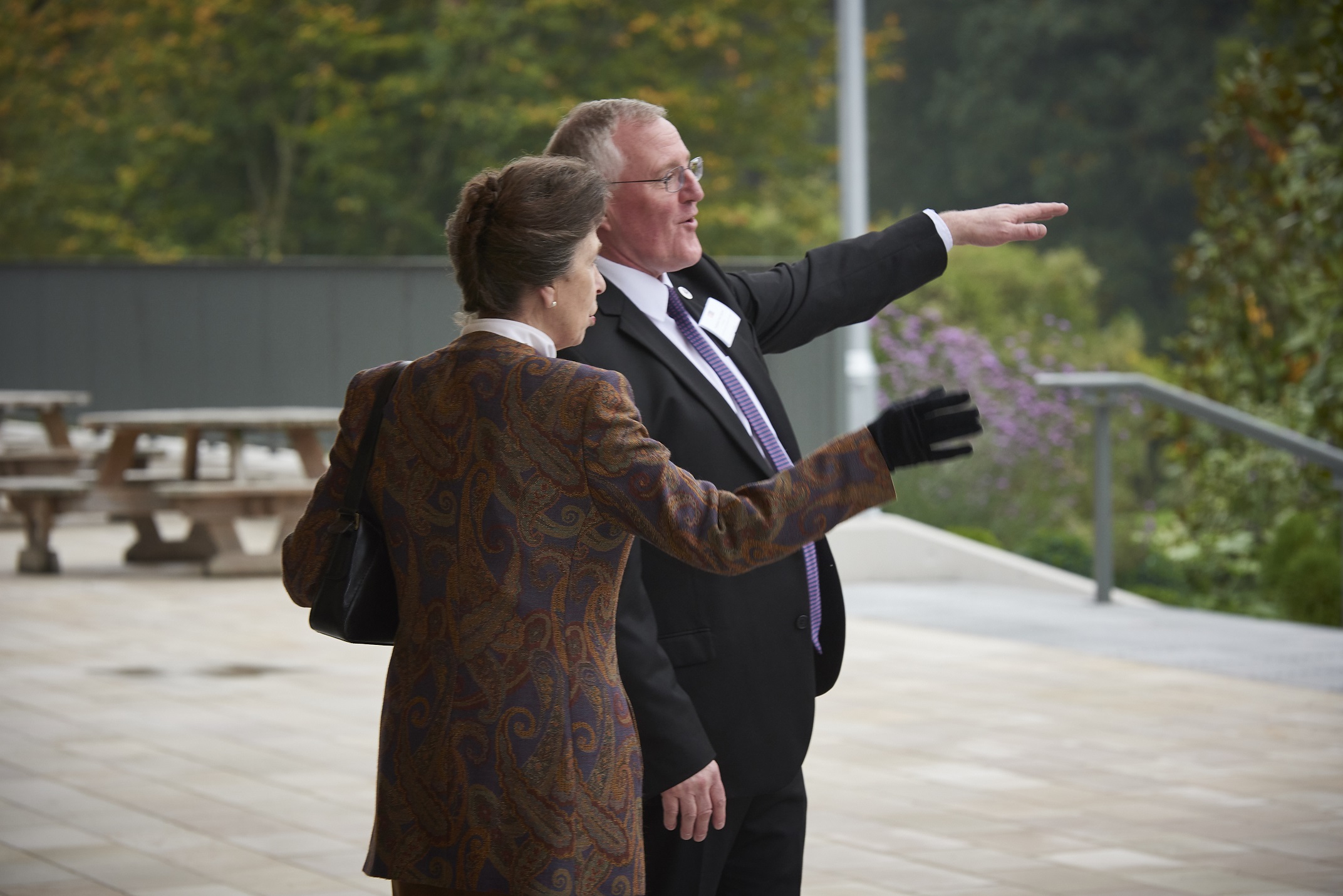
When the Royal Party departed, Orbital Magazine were offered the chance to interview Principal Layzell as well as Dr. Stella Moss, a lecturer in the Department of History, about the new building and the historical legacy behind it. We sat in one of Davison’s Group Study Rooms, facing the beautiful view of Canada Copse.
My first question to Principal Layzell was probably one that was on everybody’s minds: how does it feel to finally see this long-worked on building come into fruition and officially opened today? He responded by laughing and stating that he “can’t quite believe it”. With planning permissions and architectural designs and, finally, the physical construction of the building, Davison has “taken four, four-and-a-half, years” to be completed. Throughout the process, he would often look at the building as it came together bit by bit and ask himself “will it ever get done?” and “how will I feel when it is finished?”
Now that it’s here, Principal Layzell finds that it’s sort of hard to fathom it. He really hopes that it has met “everybody’s expectations” and he is pleased to find that the feedback he has received has been wholly positive. He often comes into the Davison Library in the early hours of the morning, when it’s still quiet, “just to look at it and think ‘it’s here.’” I remarked that it must feel surreal and it must be nice to see all the seats getting filled up quickly and Principal Layzell agreed wholeheartedly, stating that it is “a fantastic feeling”.
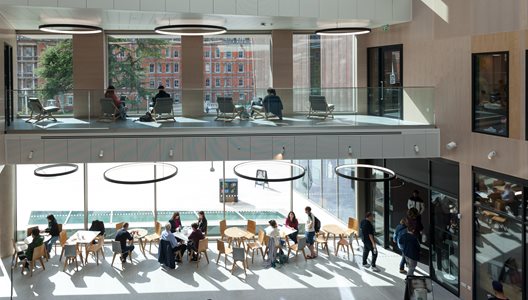
We then spoke about the campus-wide vote that led to the building being named after Emily Wilding Davison. I asked him whether he voted for the Davison name or would he have preferred it to be a different name.
He laughed and said: “I couldn’t possibly tell me who I voted for… In fact, I didn’t vote, actually.” I was quite surprised by this but he went on to say that he wanted it to be “the choice of the our students and staff” and that he was extremely happy with the outcome as it is really “great to name the building after someone who made a real difference in the world and had a connection to the college”.
With the recent rise Royal Holloway’s place in university rankings, I was curious as to whether Principal Layzell believed that the new library contributed in any way to the increase. His answer was: “it may well have done… as library spaces and resources are absolutely critical to the student experience”. He is hoping that the library is “a way of moving up [and increasing] student satisfaction” and making sure “we meet the needs of our students”.
It was an honour to interview Professor Paul Layzell, Principal of Royal Holloway, and very interesting to hear his thoughts of the Davison building, a place that celebrates the legacy of a famed alumna and of the college as a whole.
Dr Stella Moss was brought in next and we spoke largely of the historical connections our campus holds. I wondered whether she thought it important for RHUL to look at the alumni we have, past and present, and pay heed to the movements they’ve created and the success they’ve enjoyed? She stated that she absolutely thinks “it is really important that the college takes very seriously our heritage and our legacies.” She wanted to iterate that it was important that we don’t just ”pay lip-service to [our heritage]” and that we do “what [the] college has done, which is to explore really carefully what histories” are a part of RHUL and “to look at the key movements that have been really integral to [the] college’s formation”.
I questioned her as to whether she hopes the Davison building and it’s historical legacy will encourage more students to look further into RHUL’s history. Dr. Moss thought that “people are increasingly aware” of the “historical nature of the college’s identity” and increasingly aware of “the story and the narrative of how the college was founded”. She further believes that there’s “something really meaningful” about the college’s historical identity.
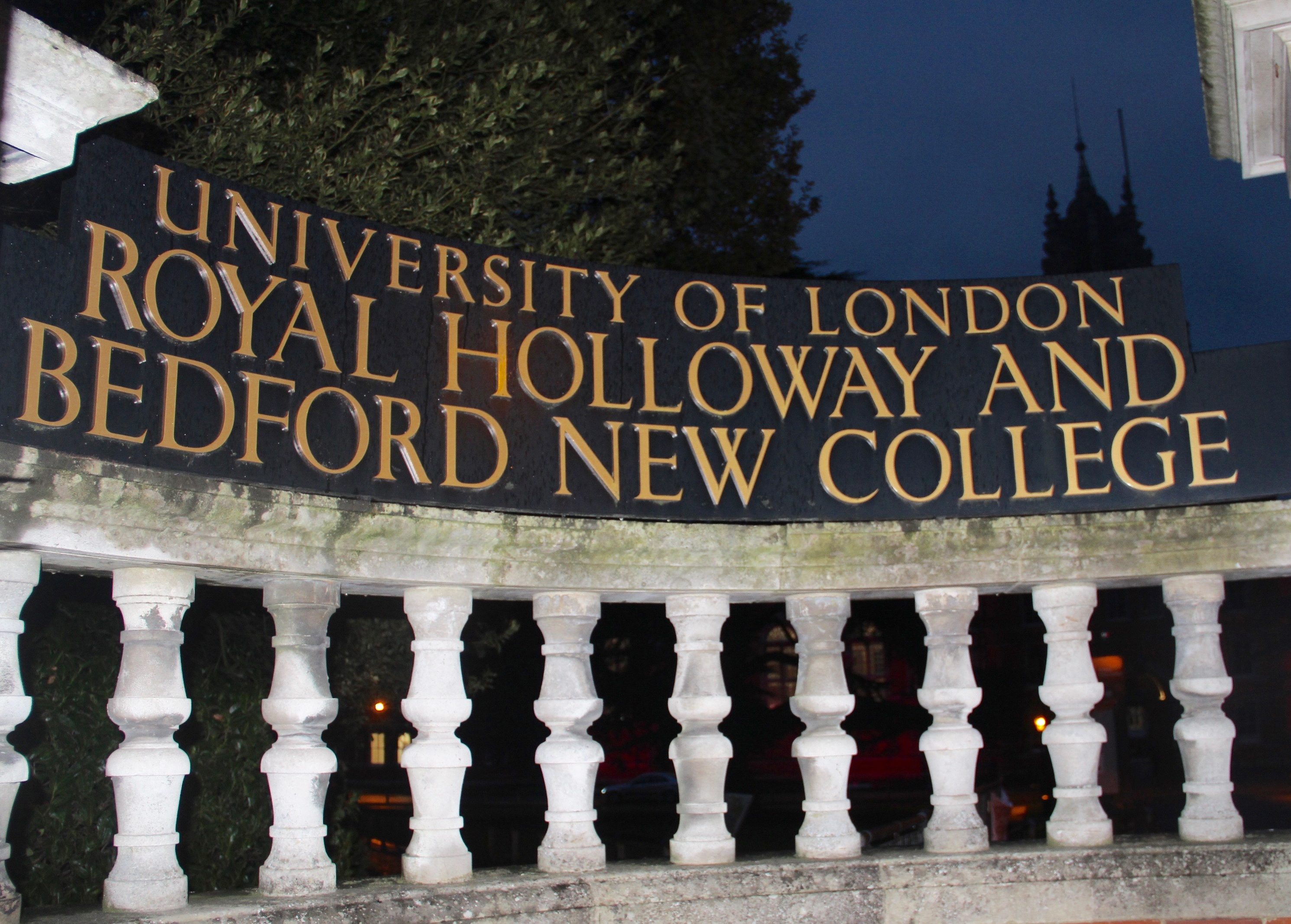
There is a longstanding history of Bedford College alumni feeling like they have been erased from the narrative of Royal Holloway’s history. Our official title is Royal Holloway and Bedford New College, University of London but for day-to-day use, it is referred to simply as Royal Holloway, University of London. With the new library being named after a Royal Holloway College alumni rather than a Bedford College alumni, it can seem like there is a lack of Bedford College legacy on campus. I asked Dr. Moss what she thought of this and how she would respond to Bedford alumni that took issue with this. Dr. Moss informed me that she is actually one of the co-directors of The Bedford Centre for the History of Women and Gender, an organisation based within the Department of History that has strong links across the campus with other aspects of the college. She stated that “it is one of the ways that Bedfordians can maintain their identity” but she would like there to be “a broader recognition of that history as it is important”. With the upcoming centenary celebration of suffrage in 2018, Dr. Moss and the Bedford Centre would like to try and “give recognition of that and to think very carefully of the history of Bedford” in particular. There are plans to showcase an exhibition relating to women’s suffrage in the Davison Exhibition Space.
Now that the Davison building is officially opened, the campus can move forward with other plans of development and continue to benefit the students that study here. Orbital Magazine thanks Professor Paul Layzell and Dr. Stella Moss for speaking to us about the Emily Wilding Davison building and Royal Holloway as a whole.
Photography provided by the RHUL Press Office.
